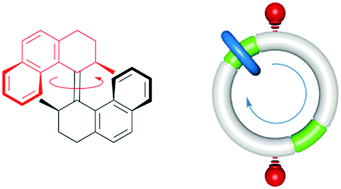Artificial molecular motors
Abstract
Motor proteins are nature's solution for directing movement at the molecular level. The field of artificial molecular motors takes inspiration from these tiny but powerful machines. Although directional motion on the nanoscale performed by synthetic molecular machines is a relatively new development, significant advances have been made. In this review an overview is given of the principal designs of artificial molecular motors and their modes of operation. Although synthetic molecular motors have also found widespread application as (multistate) switches, we focus on the control of directional movement, both at the molecular scale and at larger magnitudes. We identify some key challenges remaining in the field.

- This article is part of the themed collections: 7th EuCheMS Chemistry Congress – Molecular frontiers and global challenges, Nobel Prize Updates, Celebrating the 2017 RSC Prize and Award Winners and Supramolecular chemistry anniversary


 Please wait while we load your content...
Please wait while we load your content...